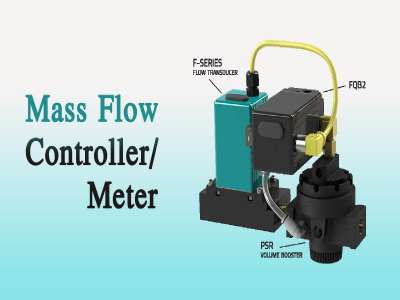What to Consider When Purchasing a Mass Flow Controller?

Many applications need the monitoring of gas control. In the semiconductor industry, those enterprises must buy tools to control and control the flow of one or multiple gases. Individuals or businesses in these industries are likely to buy a wide variety of products, including a mass flow controller.
With many mass flow control products available, several things should be considered before a product is purchased. One of the most important things that must be considered is what the product offers. This information can most easily be determined by researching several mass flow controllers. When a product is purchased or being sold, there will likely be valuable information provided with the item. This information should be thoroughly read and examined to ensure that the best mass flow controller is purchased.
When reading a product guide or an instruction manual, one thing that should be looked at is its simplicity. Many of the individuals responsible for using a mass flow controller are likely to be experienced and trained in the field; however, that does not mean that an easy-to-use product should not be purchased. The instruction manual is a great way to determine if a mass flow controller would be easy to use and operate.
The speed of a mass flow controller should also be examined. A product package or description should provide detailed information on how quickly results are shown. This information is vital because it will not only save time but money as well. Older models are likely to have a slower response time; therefore, individuals looking for a faster response are encouraged to look at newer mass flow controllers.
In addition to speed and product simplicity, it is also essential to know how dependable the product is. This information may be difficult to determine through a product manual. To learn the dependability of a product or manufacture, individuals are encouraged to talk to others in similar industries or use the internet. This will allow you to get positive and negative feedback from those who previously owned or operated a particular mass flow controller.
Another thing that should be examined before purchasing a mass controller is the cost of ownership. When reviewing the cost, many individuals only concentrate on the purchase price, but more is included in the cost of ownership. It is crucial to consider the cost of repairs or replacements if they are needed. These ownership costs could be eliminated if a dependable product is purchased. It is also essential to determine the amount of power that a mass flow controller will use. Most mass flow controllers will operate on little power, but that does not mean that all will.
Taking all of the above-mentioned points into consideration will ensure that a quality mass controller is purchased. With a small amount of time and research, a bad purchase can be prevented.
Controlled flow & Way of the Liquid by the flow control valve sensors
Flow meters are the tools for precisely regulating the fluid passing flow rate in a pipe or an open area. The analysis can be made either based on the mass flow rate or the volumetric flow rate. The flow rate can be changed and classified with precise tools called the flow control valve sensors. It gives specific and programmable data, which helps in the performance of the division. Many traders have a great choice of the control valve sensors to pick from. The sensor type is chosen based on the use and the purpose, which gives flawless potency.
Design of the Flow Control Valves
The flow control valve sensors have varied designs, from simple openings to clean electro-hydraulic valves. Various valve sensors' diverse styles are automatically set according to the variation in temperature and pressure. The control valves are usually connected to the actuators or positioners, which regulate the rate by controlling the flow rate.
Regulating the Flow Rate with the Help of Valves
The various kinds of flow control valves that are used in many industries are
- Orifices – The flow control valve's primary design measures the flow and fits the pump.
- Flow regulator – With a compact design, it recognizes the pressure drop across the orifice's flow rate. It regulates the flow rate firmly in the presence of the change in force.
- Bypass flow regulator – In this flow control sensor, the much amount of fluid flows more than the set limit returns to the tank in a bypass port. It gives an adequate output without any wastage.
- Demand-compensated flow control – The excess fluid is more than the set limit returns to a trivial circuit, where the fluid is used. In this Way, both the circuits can run in an association, giving productive output.
- Pressure-compensated flow control – This flow control is provided with portable equipment, which keeps a steady pressure under the working state.
- Pressure and temperature compensated flow control – The Liquid's thickness and weight vary with various temperatures and pressure. To limit the variety of the features of the Liquid, this flow control valve is applied.
- Priority valves – This control valve controls the flow rate, which provides the Liquid's set limit to the primary circuit and then bypasses the excess fluid to the secondary circuit. The first circuit controls the secondary circuit.
- Deceleration Valve – It is a force-neutralized control valve, which raises the cylinder's back pressure when the valve shuts.
Application of the Flow Control Valves
The distinctive forms of the control valve in different industries are
- Pipelines
- Oil and gas
- Food and beverage
- Bio-pharma industry
- Marine industry
- Non-industrial use
Conclusion
The flow rate also assesses the quality of change of power at any given force. The flow control valve controls the fluid flowing by the valve in the volumetric, mass, and weight flow rate.
- Comment
- Posted by Naman Modi